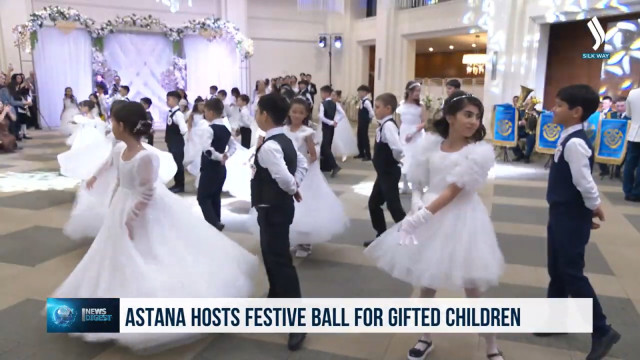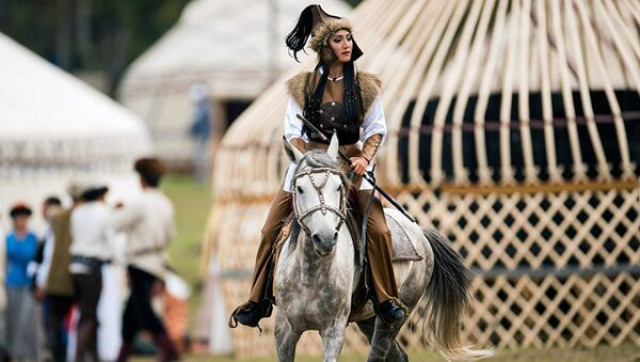
The modern saukele, a Kazakh
national wedding headdress, combines luxury and elegance. For centuries, it has
served as a symbol of a girl’s transition from carefree youth to family life.
Not all masters know the art of saukele sewing for which all details are
important - from the mood of the needlewoman to her artistic skills. At the
same time, it is important not to forget traditional beliefs which claim that
the more richly decorated the headdress is, the happier and luckier the bride
will be. Valentina Skiruk, a craftswoman from Astana,
manages to consider all those peculiarities in her works. Her saukeles made in
collaboration with the famous designer Anastassiya Romanova have been pleasing
brides for many years. In general, Valentina has sewn over 200 pieces of
headdresses.
“This is an ethnic saukele, which
girls used to wear in past times. It has been slightly changed in accordance
with modern realities. The zhaktau (long pendants attached to the saukele from
the sides) used to be exactly like that. Now they have become more open,
elegant, interesting and unique. In the past, the zhaktau was made in this way,
and then it was decorated with turquoise, gold and silver coins. It was more
expensive than the saukele. In general, the decoration depended on the bride’s
financial status,” Skiruk said.
Valentina takes up to four days
to make a saukele. A whole day is spent to make the shape, but the most delicate
part of the work is decorating. To date, there is an increasing number of modern
brides choosing ethnic clothes for the wedding, the needlewoman says.
“Probably 90 percent of brides
choose Kazakh traditional wedding dress. Girls abroad who marry Kazakh men wear
saukele, thus paying tribute to the traditions of the groom and his relatives.
We have recently had a client from England. When she tried on a national
wedding outfit, she was delighted, saying she looked like a Kazakh queen,” Skiruk
added.
Valentina dreams of opening the
House of Saukele in Astana so that more brides feel involved in the unique
traditions of the Kazakh people.









